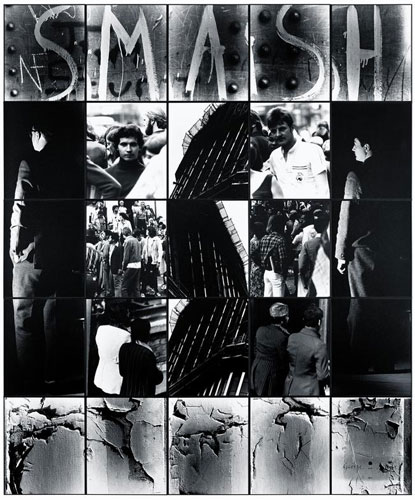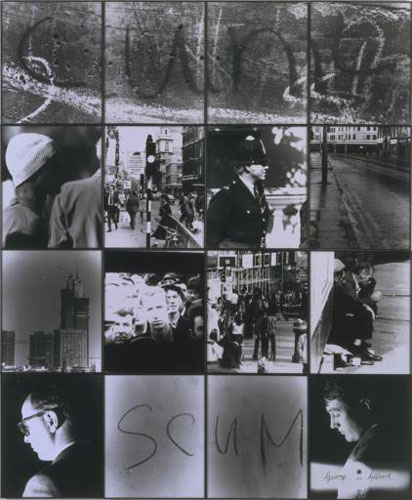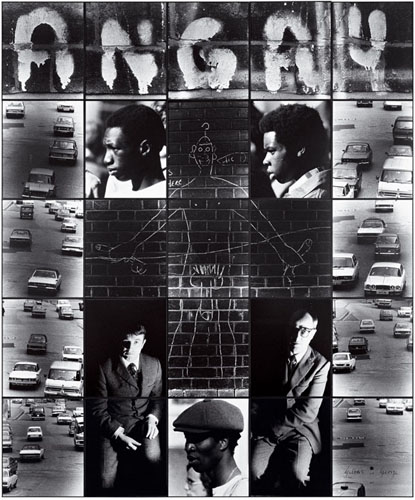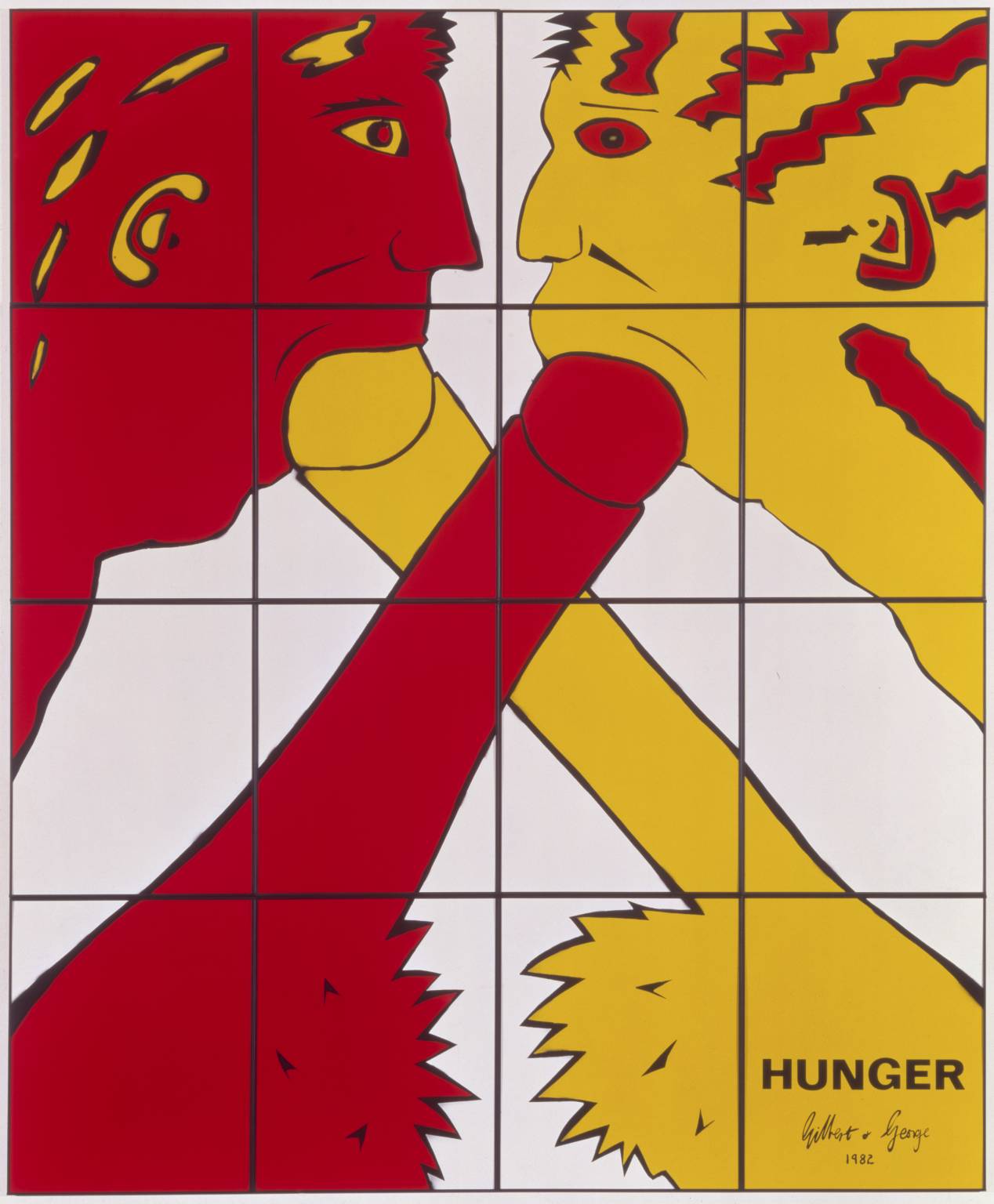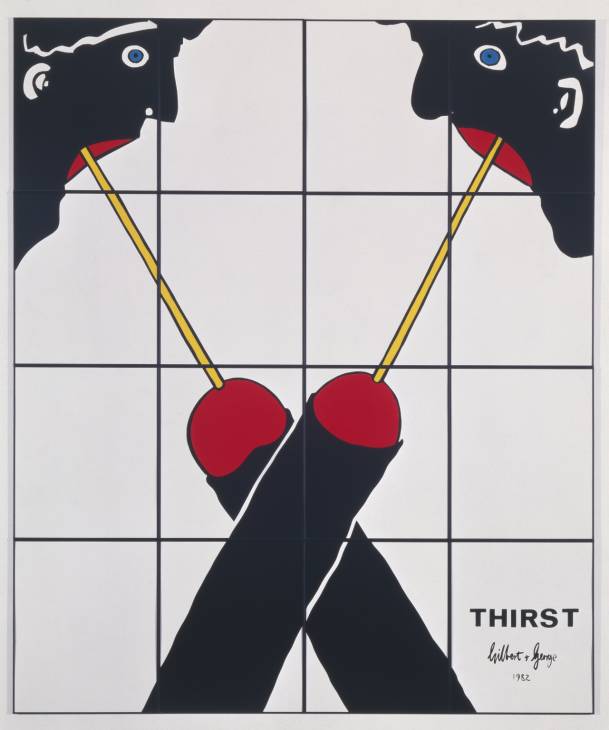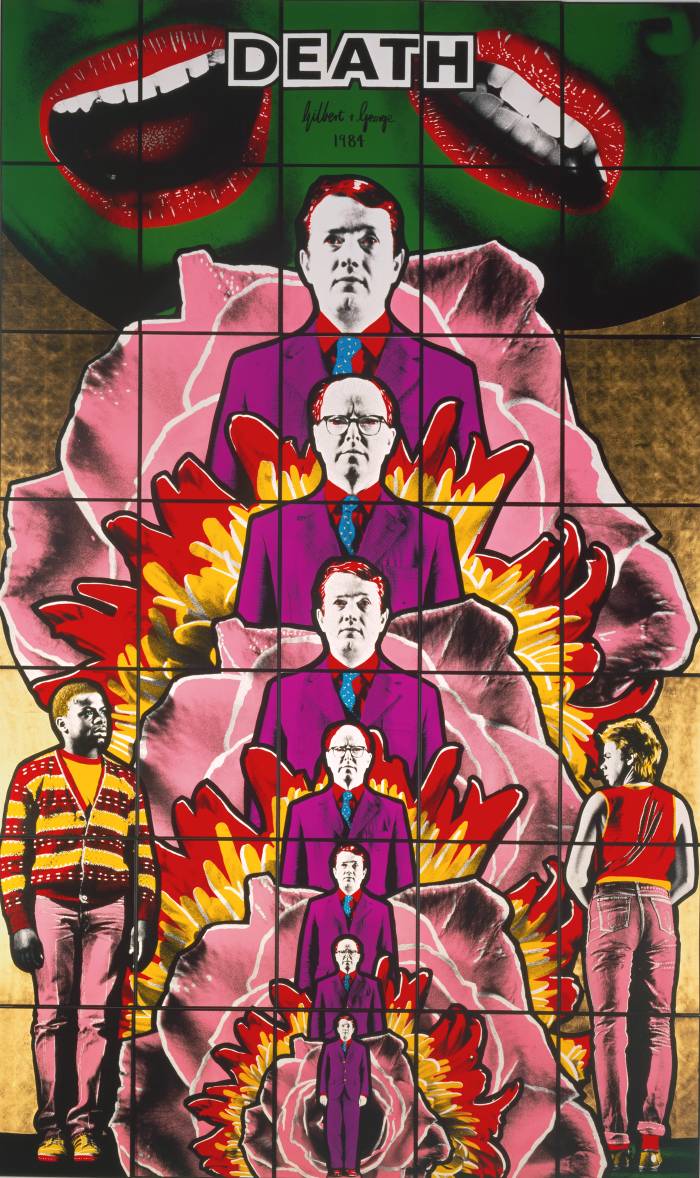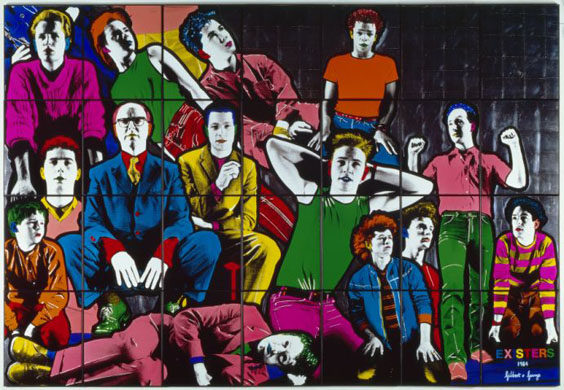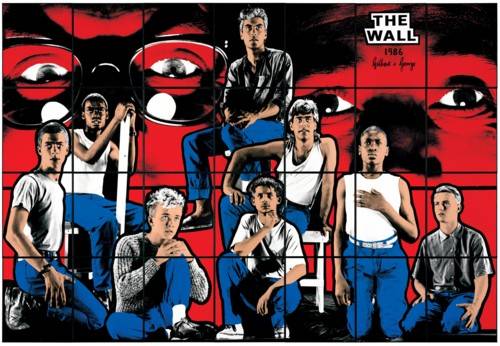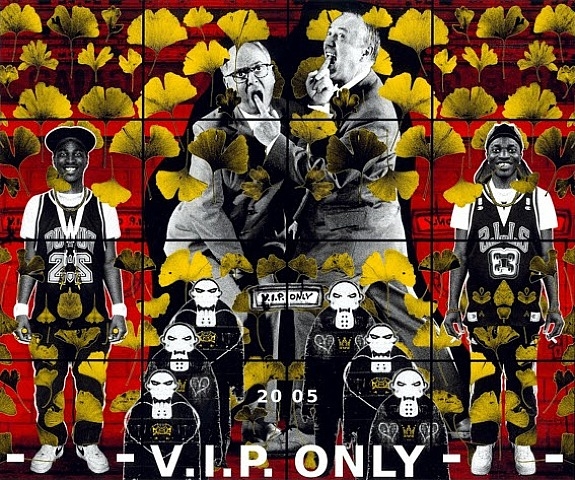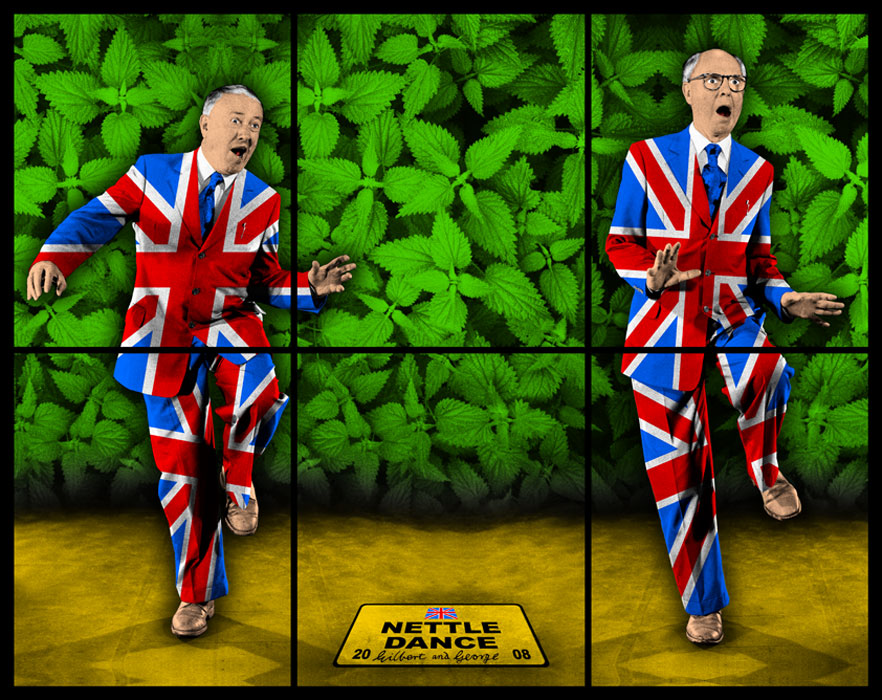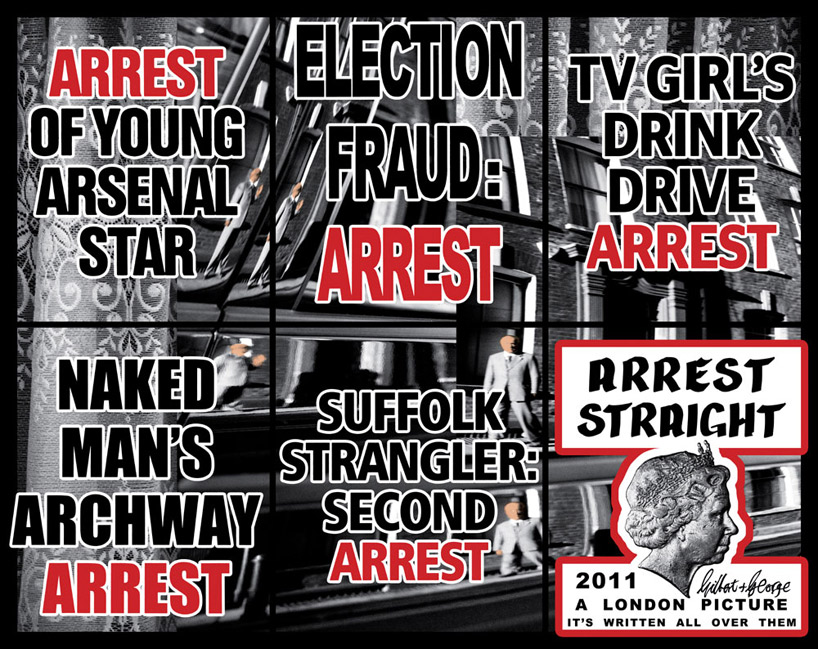Seit 1967 sind Gilbert & George ein Paar – in der Kunst wie im Leben. Durch ihre Auftritte als «Living Sculptures» wurden sie weltberühmt; heute sind sie die Popstars der zeitgenössischen Kunst.
Zu Beginn ihrer Karriere – beide sind Bildhauer – standen Gilbert & George zunächst mit leeren Händen da: ohne Galerie und ohne Atelier, aber mit dem bedeutenden Einfall, sich selbst zu Kunstwerken zu erklären. Damit erweiterten, ja revolutionierten sie den Skulpturbegriff und brachten sich selbst als «Living Sculptures», als lebende Skulpturen, heraus. Auf das Publikum Ende der 1960er-Jahre wirkte ihre Erscheinung und ihre systematischen Trinkgelage in gepflegten Massanzügen einigermaßen irritierend – schliesslich stand der bürgerliche Habitus, den Gilbert & George rein äusserlich kultivierten, stets im Widerspruch zum antibürgerlichen, provokativen und nicht selten schockierenden Inhalt ihrer aberwitzigen Auftritte.
Seit nunmehr 40 Jahren machen Gilbert & George ihr Leben im Londoner East End zum Feld der Beobachtung – und ihren Alltag, ihre Partnerschaft und Sexualität zum festen Bestandteil ihrer Kunst. Wie damals als Living Sculptures in den 1960er- und 70er-Jahren treten Gilbert & George auch in ihren Zeichnungen und grossformatigen Fotos wie Figuren im eigenen Werk auf. Sie haben sich dabei nie gescheut, auch mit gesellschaftlichen Tabus zu brechen: Die Ergründung ihres eigenen – oftmals nackten – Körpers und des eigenen Ich war stets schonungslos bis hin zur Selbstentblössung und Verwundbarkeit; sie integrierten jugendliche Delinquenten und Clochards in ihre grellbunten Collagen und erwählten schliesslich die Filzlaus zu ihrem «Familienwappen», um sie von Scham und Ekel zu befreien: «Niemand hat ein gutes Wort für die Filzlaus. Sie taucht weder in Kunstgalerien noch in Museen auf und wird diskriminiert. Daher beschlossen wir, … sie gross und heldenhaft aussehen zu lassen … symmetrisch an die Wände projiziert, wirkte sie auf einmal würdevoll wie ein Wappentier und schillernd wie ein Partygirl.» Gilbert & George
It’s different from the museum professionals, because they always want to install it with a view to taste, what they would like, whether fewer or more pictures. We install it as though we are the viewers, as if they’re arriving in the museum and have never seen an exhibition before. They come and see the first picture on the wall, they turn to the left, they turn to the right. We try to create the same adventure for visiting the exhibition as we had when creating it, to make it a human experience. And the professionals tend not to have that idea. They tend to make an installation that pleases them personally.
We always arrange the rooms with different kinds of emotions. […] We do this so that for every room that you walk into, your emotions are affected in a different way. If you can’t affect the ordinary public, they will leave the museum empty-handed. They will not remember anything about it; they’ll just forget it. And that’s why we want to concentrate on the viewer.
One of the most amazing posters was for the Hayward show in 1987. All the old ladies thought that the fingers that were over the cross were penises […]. It was all over London. We did an illegal one of 8000 posters and we paid for that. […] Time and time again we have been accused of self-promotion, but recently they have stopped accusing us of this. […] Everybody has to promote their works, but when it comes to art they think you shouldn’t do it. If people like it and come to see the show it’s as if you’re lucky or something. And we don’t believe in that. It is part of an exhibition. You have to get the people there to have a look at it.
Gilbert & George
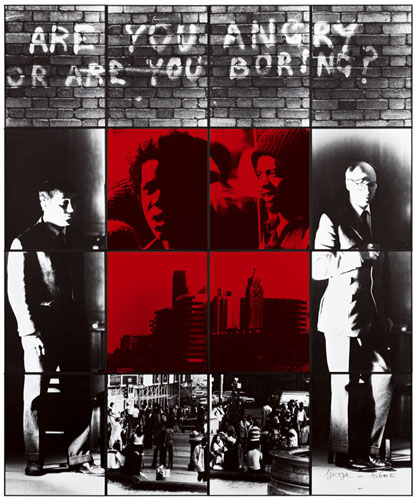 Are you angry or are you boring? 1977
Are you angry or are you boring? 1977
GILBERT & GEORGE, MAJOR EXHIBITION
BEND IT
SINGING SCULPTURE
Quelle Einleitungstext: Haus der Kunst, München
Quelle Zitate: GILBERT & GEORGE, Gilbert & George (Interview), in: Hans Ulrich OBRIST (Hg.), Interviews. Volume I, Mailand, Florenz 2003, S. 249–275, hier S. 255–258.
Quellen Bilder: Titelbild: The Great Szpilman Smash: Museo Madre Cunt, Angry, Are you angry…?: !var Hagendoorn Hunger, Thirst, Death…, Existers: Tate The Wall: London Travel V.I.P. Only: artnet Nettle Dance: Oak Tree Fine Press Mystery: Londonist Arrest Straight: designboom

